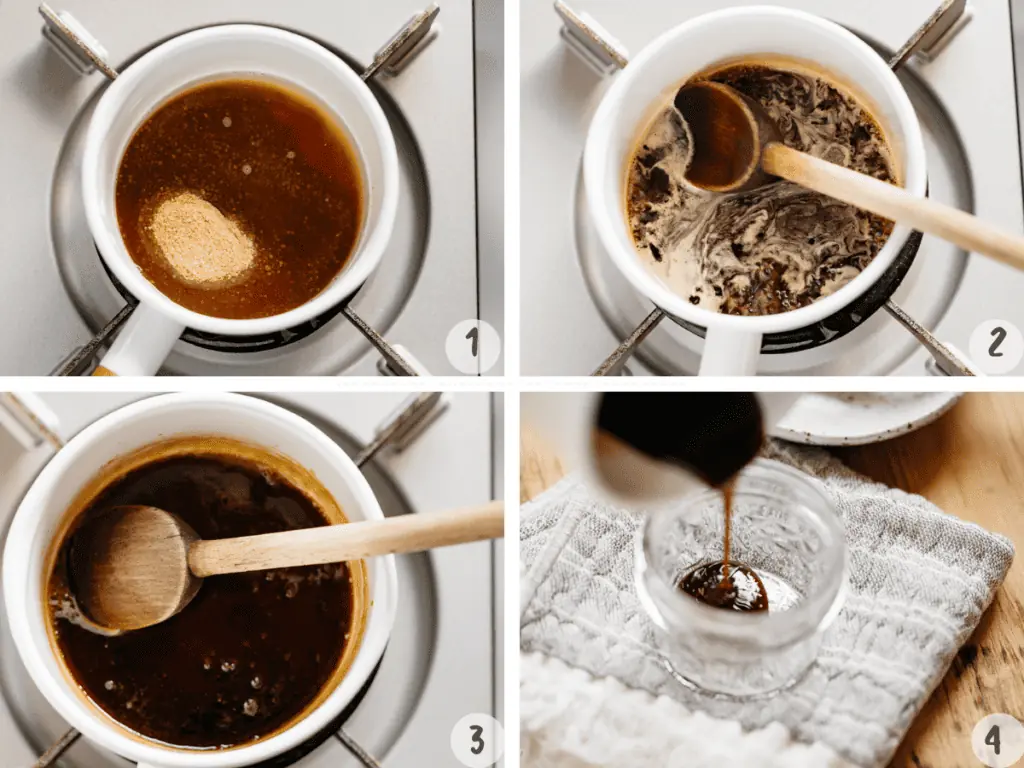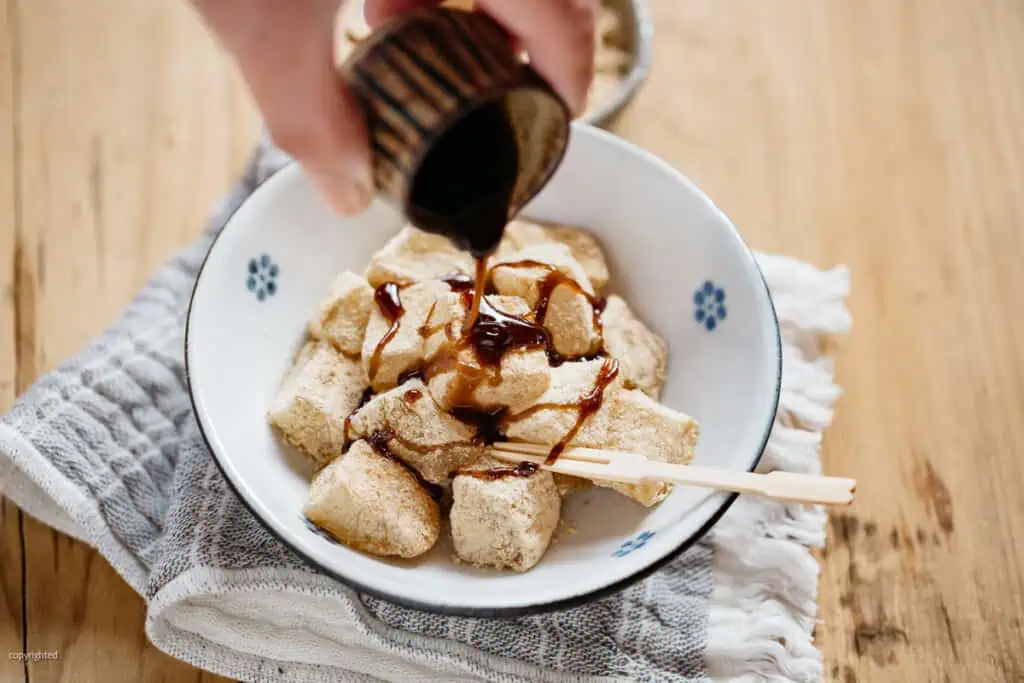To add a touch of irresistible rich sweetness to a dessert, look no further than the delectable kuromitsu syrup. This traditional Japanese syrup, with its rich dark colour and velvety texture, will delight your taste buds and elevate your sweet treats. Whether you’re drizzling it over fluffy pancakes or traditional warabimochi, stirring it into a cup of steaming matcha tea, or using it as a dip for fresh fruits, kuromitsu is sure to take your dishes from ordinary to extraordinary.
Table of contents
What is Kuromitsu?
Kuromitsu (黒蜜) translates to Black Honey or black syrup in English. As the name suggests Kuromitsu is a very dark syrup made from Kokuto, a type of brown sugar. Kuromitsu is traditionally made by simmering kurozato (black sugar) or Kokuto with water slowly until it thickens into a rich black syrup. The texture and distinctive taste profile of kuromitsu lies somewhere between caramel and molasses but with much more complexity. Its deep sweetness carries hints of smokiness along with mild bitterness that balances perfectly on the palate.
The addition of small amounts of soy sauce or mirin enhances its depth of flavour and imparts a subtle umami note. Kuromitsu is an indispensable ingredient for traditional Japanese sweets called “wagashi”. It is often served as a topping on warabimochi and is used on other desserts like anmitsu, pancakes, ice cream, and shaved ice. Although it sounds like a complex condiment, kuromitsu is surprisingly easy to make at home.
Ingredients
This easy kuromitsu recipe only requires two ingredients – Kokuto and water. But why Kokuto? Because kokuto is an unrefined cane sugar so its sugar content is around 80% which is the lowest among sugars. It also has a unique flavour and caramel like sweetness.
Kokuto Brown Sugar is classified as nectar sugar (ganmitsutou) by its manufacturing method as the sugar crystals and molasses do not separate when making the sugar. Typical sugars of this type are brown sugar such as muscovado, maple syrup, and palm sugar.
“Nectar sugar” is made by boiling down the squeezed juice of raw sugar cane. Since it is not refined, it contains a lot of natural mineral ingredients derived from sugar cane. Sugar cane is produced mainly in Okinawa and Kagoshima prefectures in Japan. This is why Kokuto is known as a specialty of Okinawa and Kagoshima prefectures in Japan.
Kokuto comes in many different forms. I used the powder type but you can use any type of Kokuto. Kokuto can be purchased from Japanese grocery stores or online stores.
reference :https://www.osatou.com/history-of-brown-sugar.html
How to make Kuromitsu Instructions
1. Place Kokuto brown sugar and water in a small saucepan over medium heat.
2. Bring it to boil and simmer to reduce.
3. Cool completely to keep in a sterilised small jar.
Tips for Making Kuromitsu
- Use quality Kokuto.
- Simmer and reduce slowly for about 15- 20 minutes to bring out the rich Kokuto flavour.
- Remove scum if it appears on the surface while simmering.
- Turn the heat off when it is quite runny as it will harden when it is cooled down.
What to serve Kuromitsu with
Kuromitsu can be used for many different Japanese and non-Japanese desserts. It goes especially well with kinako roasted soybean flour for traditional Japanese desserts like warabi mochi. It can also be drizzled over ice cream, pancakes, shaved iced, waffles, and more or stirred into drinks to add some rich sweetness.
Other desserts with kuromitsu:
FAQ
A : You can use muscovado to replace kokuto.
A : Kuromitsu will keep about a month in the refrigerator.

Kuromitsu
Equipment
- 1 saucepan
Ingredients
- ¼ cup Kokutō
- ¼ cup water
Instructions
- Put kokuto and water in a small saucepan over medium heat.
- Bring it to boil, then turn the heat down to simmer for about 15-20 minutes stirring with a spatula .
- Remove scum as needed.
- Turn the heat off when it thickens and while it is still a little runny, as it will harden more when it cools down.
- Pour it into a sterilised jar to keep.







what is kokuto and where do you get it?
Hi Naomi, Kokuto is an unrefined cane sugar, and you can get it from Asian/Japanese grocery stores or online too. There is a link in ‘What is Kuromitsu?
‘ paragraph. It is same as kurozato 😀